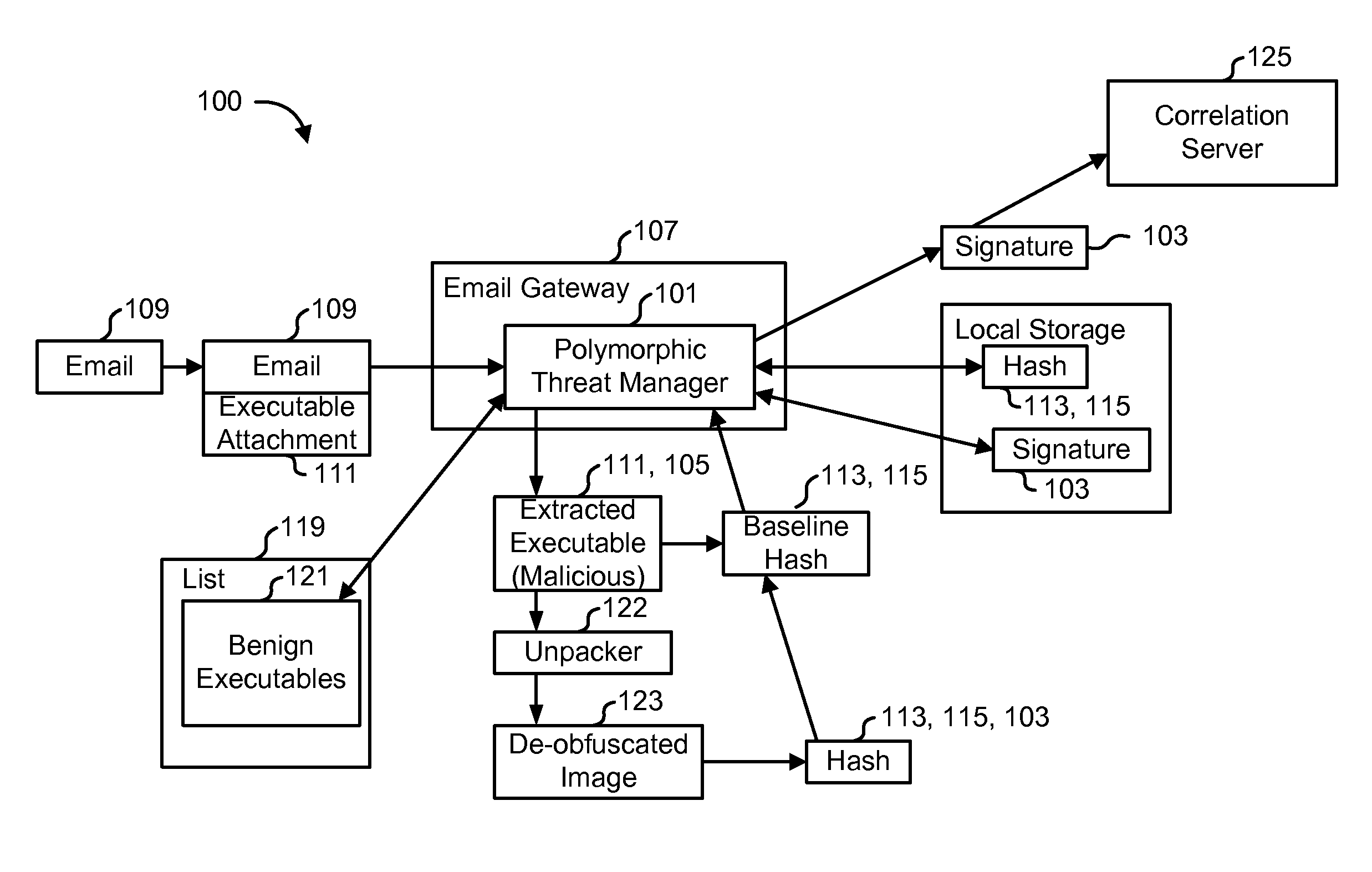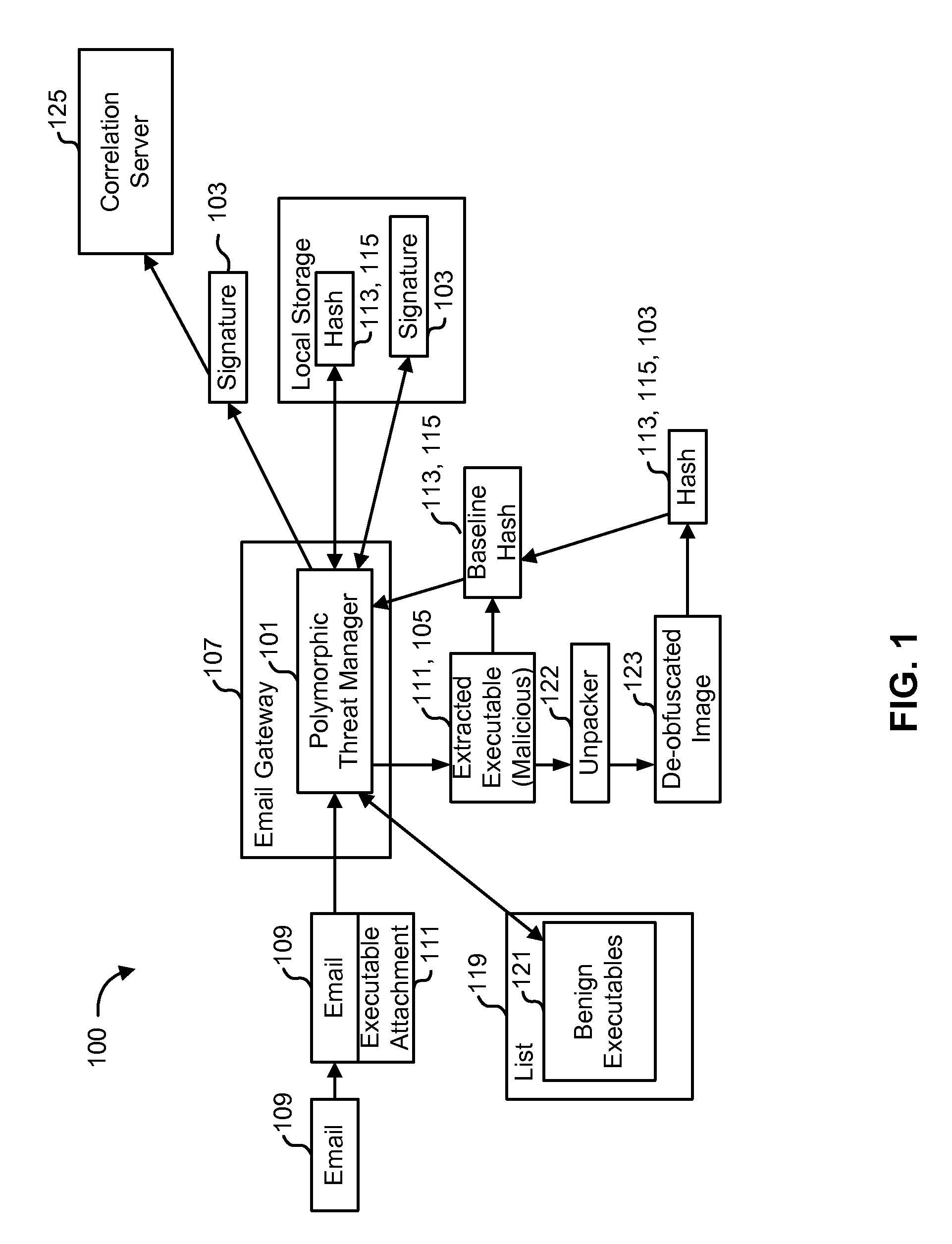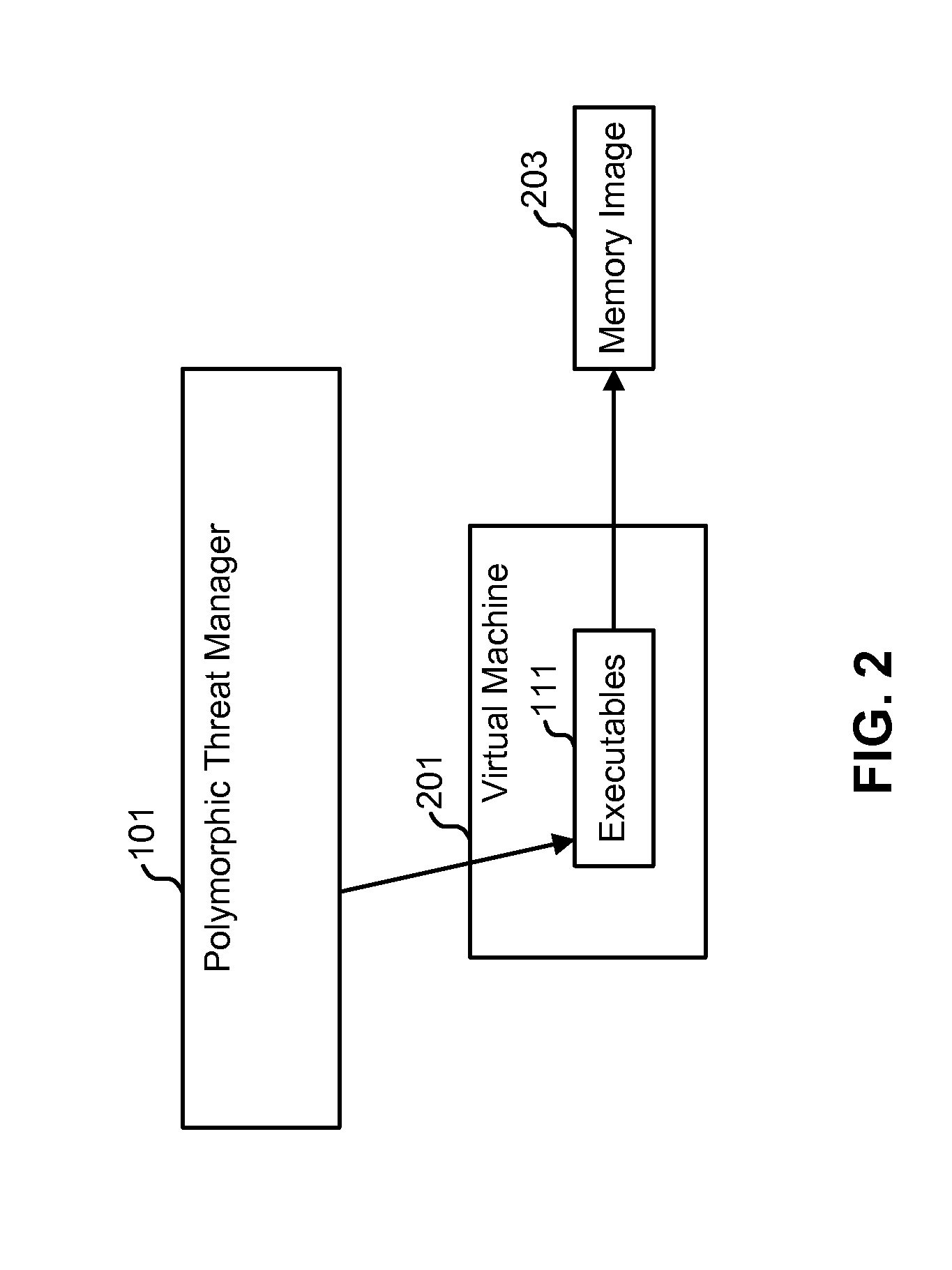Detecting polymorphic threats
a polymorphic threat and polymorphic technology, applied in the field of computer security, can solve the problems of causing millions of dollars in damage and cleanup costs, reducing the load on the correlation system, and reducing the burden on the correlation system
- Summary
- Abstract
- Description
- Claims
- Application Information
AI Technical Summary
Benefits of technology
Problems solved by technology
Method used
Image
Examples
Embodiment Construction
[0012]FIG. 1 illustrates a high level overview of a system 100 for practicing some embodiments of the present invention. A polymorphic threat manager 101 detects and generates signatures 103 for polymorphic malicious code 105. It is to be understood that although the polymorphic threat manager 101 is illustrated as a single entity, as the term is used herein a polymorphic threat manager 101 refers to a collection of functionalities which can be implemented as software, hardware, firmware or any combination of these. Where a polymorphic threat manager 101 is implemented as software, it can be implemented as a standalone program, but can also be implemented in other ways, for example as part of a larger program, as a plurality of separate programs, as one or more device drivers or as one or more statically or dynamically linked libraries.
[0013]One of the distinguishing characteristics of polymorphic threats 105 is that they typically decrypt themselves in order to execute the actual v...
PUM
 Login to View More
Login to View More Abstract
Description
Claims
Application Information
 Login to View More
Login to View More - R&D
- Intellectual Property
- Life Sciences
- Materials
- Tech Scout
- Unparalleled Data Quality
- Higher Quality Content
- 60% Fewer Hallucinations
Browse by: Latest US Patents, China's latest patents, Technical Efficacy Thesaurus, Application Domain, Technology Topic, Popular Technical Reports.
© 2025 PatSnap. All rights reserved.Legal|Privacy policy|Modern Slavery Act Transparency Statement|Sitemap|About US| Contact US: help@patsnap.com



